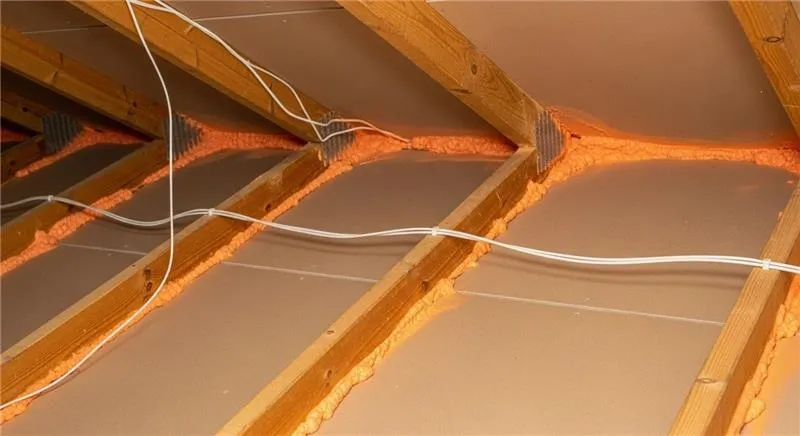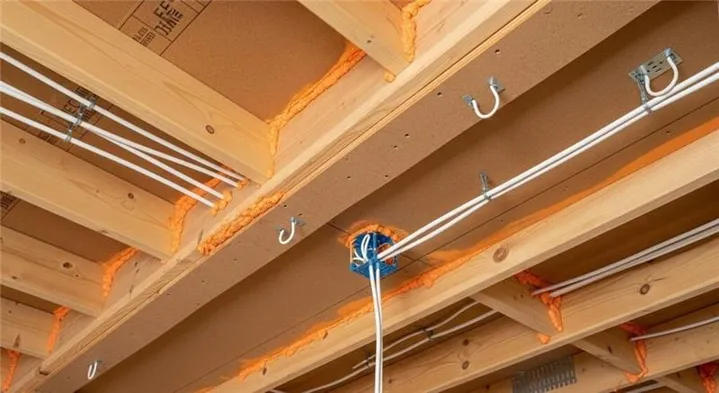
Thermal resistance measures how well a material blocks heat flow, often rated with an R-value where higher numbers mean better insulation. Air sealing, on the other hand, stops unwanted air movement through gaps and cracks in a building’s structure. The main difference lies in their focus: thermal resistance slows conductive heat transfer, while air sealing prevents drafts that carry heat or cold air in and out.
This article breaks down these concepts step by step, offering practical details to help homeowners and builders make informed choices. High Country Solutions draws from years of work in energy-efficient building practices to explain these elements clearly. Readers will gain tools to assess their own spaces effectively.
Materials like fiberglass batts or foam boards provide thermal resistance by creating a barrier to heat conduction. Heat moves from warm areas to cooler ones through solids, and insulation materials trap air pockets that resist this flow. An R-value quantifies this: for example, R-19 insulation suits most attics in moderate climates.
In practice, installers measure wall cavities and attic spaces to fit insulation snugly. Poor installation leaves voids that reduce effectiveness. A study from the U.S. Department of Energy highlights that proper R-values can cut heating costs by up to 30% in homes.
Bonus Tip: Test existing insulation depth with a ruler before adding more; aim for even coverage to avoid cold spots.
While thermal resistance focuses on these material barriers, air sealing takes the next step by preventing air from bypassing them entirely.
Air sealing targets leaks around windows, doors, electrical outlets, and joints in walls or floors. Drafts account for 25-40% of a home’s energy loss, according to data from Energy Star. Caulk, weatherstripping, and spray foam close these paths, creating a tight building envelope.
Workers often use blower door tests to find leaks. This device pressurizes a home and measures airflow, revealing problem areas. In cold regions like the Rocky Mountains, unsealed attics let warm air escape, leading to ice dams on roofs.
Seal gaps methodically: start with the attic floor, then move to basements and exterior walls. Materials expand to fill irregular spaces, but over-application near chimneys risks fire hazards.
Thermal resistance and air sealing work together but address separate issues. Insulation alone does little against air leaks, just as sealing does not insulate. The table below compares them side by side.
| Aspect | Thermal Resistance | Air Sealing |
|---|---|---|
| Primary Function | Blocks conductive heat transfer | Stops air infiltration and exfiltration |
| Measurement | R-value (higher is better) | ACH (air changes per hour, lower is better) |
| Common Materials | Fiberglass, cellulose, rigid foam | Caulk, foam sealant, weatherstripping |
| Installation Focus | Filling cavities evenly | Targeting gaps and penetrations |
| Energy Impact | Reduces heat loss through materials | Prevents drafts carrying conditioned air |
This side-by-side view underscores the synergistic effects in real-world applications. Data from the Building Science Corporation indicates that homes with integrated approaches save 15-20% more on utilities than those using only one method.
Ignoring either leads to wasted energy. In high-altitude areas with harsh winters, like Wyoming, cold air slips through seals and overwhelms insulation. A report from the Oak Ridge National Laboratory found that air leakage contributes to 33% of residential heating loads in northern U.S. states.
Effective strategies lower bills and improve comfort. For instance, sealed homes maintain even temperatures, reducing hot and cold zones. Builders prioritize air sealing first, then add insulation to maximize gains.
Bonus Tip: Use a smoke pencil during tests to visualize air movement; it reveals hidden leaks behind baseboards or around pipes.
Assess current home performance with a home energy audit. Check for drafts by holding a hand near suspected areas on windy days. Consider local climate: in snowy, windy regions, prioritize sealing exterior walls and roofs to combat pressure differences.
Budget plays a role; air sealing often costs less upfront than insulation upgrades. Long-term savings depend on material quality and labor skill. Evaluate DIY potential versus professional help, especially for hard-to-reach spots like crawlspaces.
Regional factors matter too. In mountainous areas, heavy snow loads demand durable seals that withstand freeze-thaw cycles. Review building codes, which often require minimum air tightness levels.
Bonus Tip: Map your home’s envelope on paper before starting; label potential leak points to plan efficiently and avoid rework.
Homeowners often wonder how to measure success. Use tools like infrared cameras to spot temperature differences post-work.
Another frequent query involves maintenance: seals degrade over time, so inspect annually for cracks.
Combining methods raises questions about over-insulation. Balance R-values with ventilation to prevent moisture buildup, which can lead to mold.

They target different losses, but together they reduce overall energy use by 20-30%. Sealing cuts drafts immediately, while insulation provides steady savings over seasons.
Yes, for small gaps use caulk or foam from hardware stores. Larger projects benefit from pros who use diagnostic tools for thorough results.
In areas like the Rockies, walls need R-20 to R-30, attics R-49 or higher. Match to local codes and heating type for optimal performance.
It does by reducing outdoor pollutants entering through leaks. Pair with mechanical ventilation to maintain fresh air flow.
Quality insulation lasts 20-50 years, seals 10-20 years with proper care. Regular checks extend their life.
Thermal resistance and air sealing tackle heat loss in distinct ways, but both drive efficiency. Start with an audit to identify needs, then apply targeted fixes suited to your climate. Evaluate personal setup, energy habits, and future plans to guide choices.
For questions on implementing these strategies, reach out to High Country Solutions at [email protected] or (307) 248-9063. Discussions help clarify options based on specific homes. High Country Solutions offers insights from regional projects to support informed steps forward. (72 words)